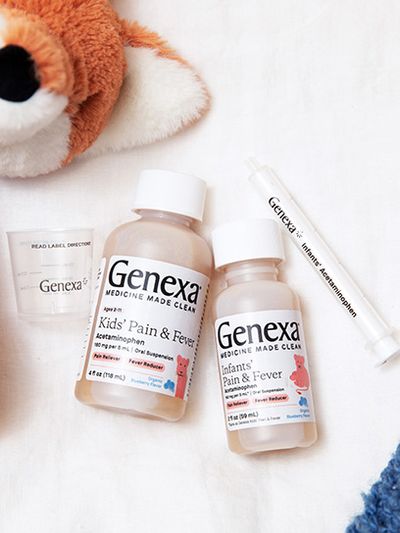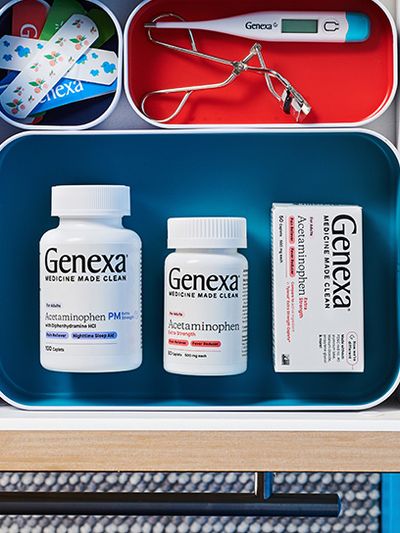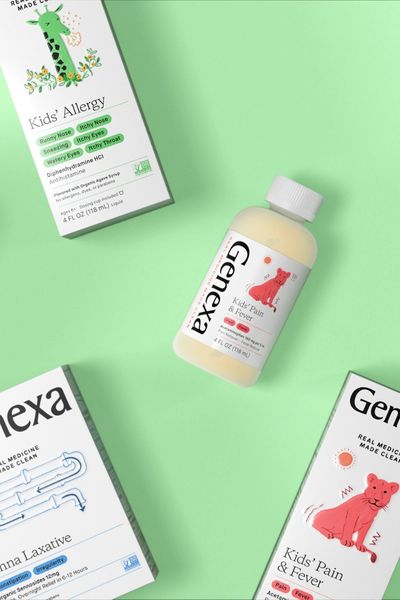Fever In Babies
How To Take Care Of Your Sick Baby
Table of contents:
A sick baby is one of the biggest fears that parents face, especially if you’re new to parenting. While illnesses like the common cold are seldom anything to worry about, fevers are a different matter entirely. If your baby has come down with a fever, it’s important to follow the right steps in treating your little one.
There are a lot of different reasons that could be the cause of your baby’s increased temperature. As with any fever, there are always risks to be aware of, especially if the fever gets too high. If your baby is less than 3 months old, any fever should be brought to the attention of their pediatrician.
But what if your little one is older than 3 months? Fortunately, you have some safe and effective treatment options you can employ at home to keep your child healthy.
Treating a Fever in a Sick Baby
As a parent, you want to give your baby the very best care and treatment. But before you administer any type of medication or treatment, it’s important to know what to look for. The normal temperature for youths/children is typically somewhere around 98.6°F or 37°C.
Please be aware that this temperature often varies in the morning and evening. For example, your baby’s body temperature will generally be lower when they wake up. As the day goes on, their body temperature will begin to rise.
This is completely normal, so don’t be alarmed if you notice these changes in temperature. It must be stated that if your baby is less than 3 months old and suffering from a fever, immediate medical care should be sought.
There could be an underlying condition that needs to be diagnosed in order to ensure the health and safety of your baby. Kids older than 3months, however, can be monitored from home. As long as the fever remains low-grade, there are things you can do to help treat symptoms.
But what temperatures are safe for youths/children, and when should you seek medical attention?
You’ll know that your baby has a fever if they display a temperature of either 100.4°F (38°C) or 99°F (37.2°C) or higher. The former is when taken rectally, while the latter is all other methods. Now that you know what to look for, you can move on to treating your little one’s symptoms.
Acetaminophen
You’ve likely heard that acetaminophen is one of the most effective medications to use in combating fevers. While this is true, it matters what brand of medication you give your baby. As current research expands on the ingredients used in over-the-counter medicines, it’s becoming clear that people need to rethink what they allow to go into their bodies.
Even the most popular drug companies are guilty of adding unnecessary chemicals and artificial additives. So, what is a parent to do when their baby is suffering from a fever? Instead of reaching for that popular brand of children’s acetaminophen, check out Genexa instead.
Genexa is the first clean medicine company, and as such. Genexa is committed to providing families with medicine made wih the same active ingredients you needs, but without the ones you don't. Genexa alos makes organic homeopathic and natural-based alternatives.
What that means to you is that those additives are avoided in favor of real ingredients. And when it comes to treating your baby’s fever, Genexa’s Kids’ Pain & Fever is a medicine made with the same active ingredients you need, but without artifical inactive ones you don't.
Thanks to this medication, you are giving your child the same active ingredient found in popular children’s medicine brands but without the rest of the unnecessary, artificial ingredients.
With the help of Genexa’s Kids’ Pain & Fever, you can now give your baby real medicine made with real ingredients that work . Kids’ Pain & Fever includes acetaminophen but avoids the artificial additives that make up many other brands.
In doing so, families everywhere can look forward to staying healthier. Genexa believes that you deserve clean ingredients. That’s why when you choose Kids’ Pain & Fever, you’ll find only the following:
- Acetaminophen (160mg per 5mL)
- Organic blueberry flavor
- Organic citrus extract
- Organic agave syrup
- Non-GMO flavor
- Purified wate.
It’s no secret that kids aren’t very fond of taking medicine, which is why Genexa uses real organic flavors in its products. With appealing tastes that kids love, you’ll have a much easier time getting your little one to take their medicine.
Directions for Kids’ Pain & Fever
- Never dose more than directed (see Overdose warning)
- Always shake well before using Kids’ Pain & Fever
- Refer to drug facts when dosing to find the correct amount
- Always use the included measuring cup to dose Kids’ Pain & Fever
- Give your child a dose of Kids’ Pain & Fever every 4 hours while symptoms last
- Trying your child’s weight to dose if possible; otherwise, use age
- Do not dose more than 5 times in 24 hours
Additional Tips
Now that you know the best way to treat fever in babies, check out some secondary tips that will go a long way in ensuring the comfort and safety of your little one.
Choosing the Right Clothing
Clothing is essential to comfort while a fever is in effect. Try to avoid dressing your baby in heavy clothing. On the contrary, the lighter the clothing, the more comfortable your child will be. The same is true for bedding.
Use thin sheets and blankets whenever your child is in bed. Both clothing and bedding will assist in keeping your child’s body temperature down as it works to fight off the fever. The body has a natural process that it employs to help stay cool during illnesses like a fever.
That’s why you want to use clothing and bedding that compliments this process. Anything thick will likely interfere and make your baby uncomfortable.
Reduce the Temperature in Your Home
Or, if you want to keep the rest of your home comfy for you and the family, focus on reducing the temperature of your baby’s room. This, too, will assist in keeping your baby comfortable while preventing potential overheating.
Consider placing fans in your child’s room to help circulate cool air. But be careful when you do this, as you want to avoid your baby breathing in cold air directly for too long. This could cause them to have a sore throat or cough.
Keep Your Little One Hydrated
The need for fluids cannot be overstated, especially when you’re sick. The same holds true for babies. The last thing you want is for your child to become dehydrated, as this could lead to a whole host of other problems.
If your baby is still nursing, continue to offer breast milk or formula. If your baby cries, pay close attention to make sure that they are still producing tears. If not, this is a sign that they are likely dehydrated and need fluids replenished.
Other notable things to look for are diaper changes. If your baby isn’t wetting their diaper, they lack the necessary fluids to do so. A dry mouth is another red flag that your little one isn’t getting sufficient fluids.
If at any point you are concerned about your baby’s hydration, contact a pediatrician right away. They can advise you on the best course of action for restoring your child’s fluid levels.
Use Baths
Bathing is a beneficial component to comforting your baby when there’s a fever present. Be sure to avoid using water that’s too hot or too cold. The key is lukewarm, as this will prevent discomfort and shivering, both of which can increase your baby’s body temperature.
You also want to make sure that you dry off your baby the moment they come out of the bathwater. This will help prevent shivering, as well.
Summary
As you can see, following these tips can make a big difference in your child’s comfort and well-being. If you have any questions or aren’t sure how to best implement these steps, don’t hesitate to reach out to your baby’s pediatrician.
Perhaps the most important thing you can do as a parent is to avoid unnecessary artificial ingredients in medications. While they may claim to be baby-friendly, there’s no denying that the extra chemicals aren’t ideal for kids. And who knows what kind of long-term side effects prolonged use could present.
Thanks to Genexa, you can know that you’re getting real medicine and homeopathic remedies made clean for your baby and the whole family. Enjoy medicine made with the same active ingredients you need, but without artifical fillers.
Whether you need to combat the common cold, defend against allergies, or treat a variety of other symptoms, Genexa has you and your loved ones covered, the clean way!






